All of us experience life differently, but for some of us, those differences present significant challenges to be overcome.
A non-neurotypical person (e.g., autistic child) will experience the world as a bewildering and even frightening place; they need more support to navigate their reality than someone who is not on the autism spectrum.
Many therapists and caregivers have found that dogs can assist autistic children where humans cannot.
However, not every dog breed or dog within a specific dog breed has what it takes to interact positively with an autistic child.
When considering a dog for an autistic child, it’s essential to consider the dog’s role, the child’s sensory needs, and the family dynamics. The best dog breeds for autistic children include:
- Labradors
- Golden Retrievers
- Standard Labradoodles
- Saint Bernard
- Bichon Frise
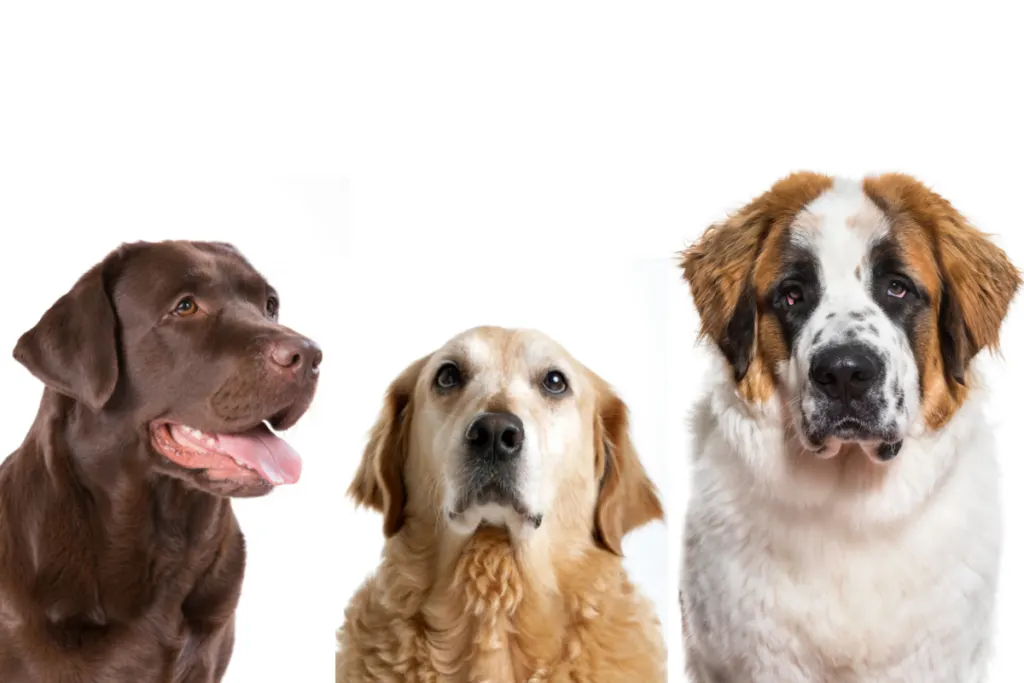
Choosing the perfect dog can be a tricky proposition for any family; add on the highly specific needs of an autistic child, and the task may seem insurmountable.
The dog breeds listed here have proven to be exemplary companions to special needs individuals and are a helpful starting point for any family who wants to add a dog to their home.
Click Here to Jump to a Section
What Dog Breeds Are Recommended For Autistic Children?
The breeds listed in this section are recommended based on the TYPICAL breed temperament; however, it is essential to remember that dogs belonging to a specific breed are not Stepford-clones of each other!
Each dog is an individual, and this means that:
- A specific dog may not be a suitable companion for an autistic child despite being a recommended breed
- The ideal dog may be found amongst dog breeds that are not typically a good match for autistic children.
The more specific the needs of your child and family, the more focused your dog choice needs to be.
Local breeders, trainers, and therapists familiar with pairing autistic children with dogs can help you avoid many of the pitfalls associated with choosing and integrating a new dog into your household.
1. Labrador Retriever
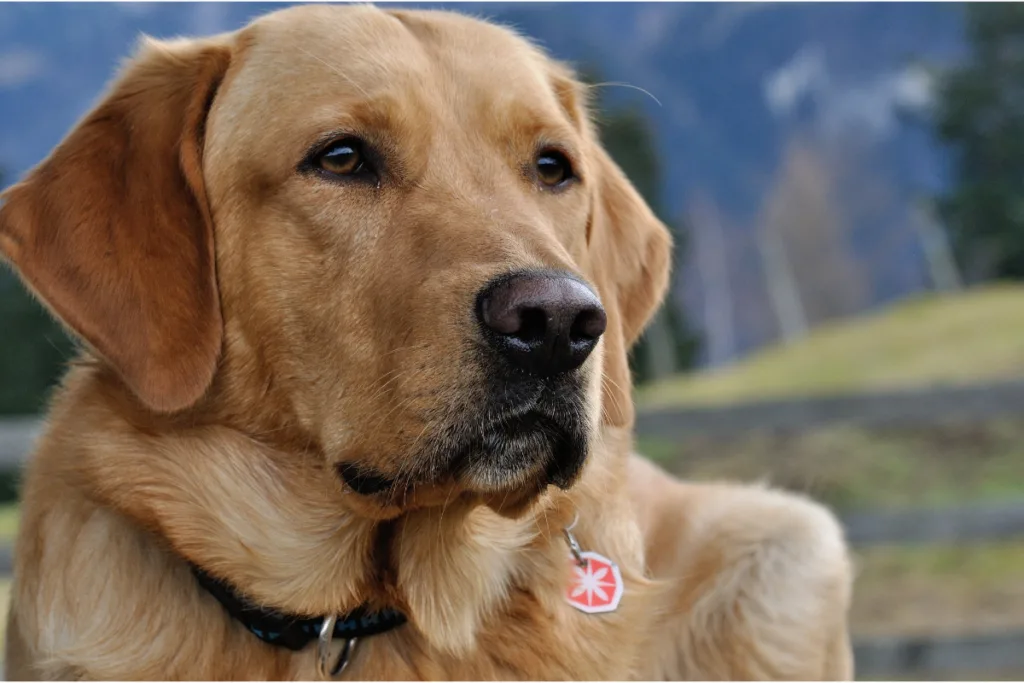
AKC Category: Sporting
Size Category: Large
Autism-linked Function: Autism specific service dog
Why Are Labradors Recommended for Autistic Children?
The Labradors were so perfectly suited to their role as service dogs that they have become the trademark dog breed for assistance dogs! To this day, many people refer to Labradors as “seeing-eye” dogs.
The Labradors’ unique ability to seamlessly offer assistance to a person with a disability is not just limited to the visually impaired.
These adaptable dogs have been used successfully as seizure alert dogs, mobility assistance dogs, and emotional support animals for people with autism.
Labradors are mellow, easy-to-train, robust dogs with sociable personalities. The high level of trainability combined with a lack of neuroticism makes the Labrador ideally suited to learning the many commands needed to assist an autistic child.
The breed’s low levels of neuroticism and gregarious natures prevent them from becoming flustered or overwhelmed by the child’s erratic behavior and emotional outbursts.
This video is a great example of a Labrador serving as the perfect companion for a child with autism:
Reasons Labradors May Not Be A Good Fit For Your Family
There are three reasons families with autistic children may choose to look at another breed rather than a Labrador:
1. They shed a lot
2. Labradors love water and frequently have a “moldy” personal aroma
3. Some Labradors are incredibly high energy
Labradors have a thick, double coat; while their grooming needs are minimal, Labradors are notorious for being heavy shedders.
Houseproud families who cannot tolerate dog hair on their clothing and furniture should consider another dog breed.
As sporting dogs, Labradors have been primarily bred as water retrievers. Although your Labrador may be a service dog or family pet, it is unlikely that they will forget their undying love of water.
Unfortunately, a permanently damp dog often equates to a musty smell!
If you or your child cannot tolerate the smell of a wet dog and you cannot restrict your Labrador’s access to water, then a different non-water-loving dog breed will be a better fit for your family.
All Labradors are moderate to high energy dogs, but some Labradors are at the extreme end of the energy spectrum; these Labradors are HIGH ENERGY!
Their excessive energy levels may make them too exuberant and overwhelming for a hypersensitive autistic child or a sedate, inactive family.
2. Golden Retriever
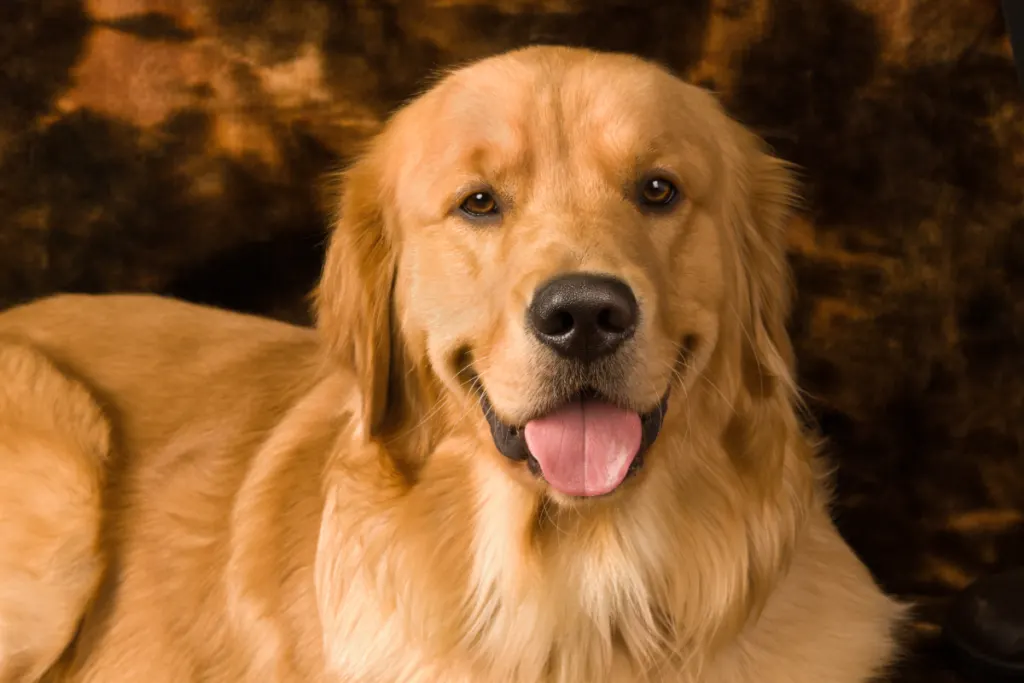
AKC Category: Sporting
Size Category: Large
Autism-linked Function: Autism specific service dog for non-aggressive noise-reactive autistic children
Why Are Golden Retrievers Recommended for Autistic Children?
Golden Retrievers share many of the traits that make Labradors exceptional service dogs; they’re friendly dogs who bond closely with their owners and live to please, making them one of the easiest dogs to train.
However, a Golden Retriever may be more compatible with autistic children that are hypersensitive to stimulation. When compared to Labradors, Golden Retrievers are:
- Lower energy and milder mannered
- Less prone to developing a “damp dog” musk
- Less likely to bark excessively
Many autistic children experience barking dogs as unpleasant and disruptive to their peace. A quiet Golden Retriever may be better tolerated by a noise-reactive autistic child than a noisy Labrador.
Personal preference dictates whether a child will prefer the texture and feel of the Golden Retriever’s silky coat or the Labradors slightly coarser short coat.
The video below has over 18 million views for a reason – it is absolutely heartwarming!
Reasons Golden Retrievers May Not Be A Good Fit For Your Family
Like the Labrador, there are three reasons a family may wish to avoid a Golden Retriever:
- Heavy shedding
- Emotional sensitivity
- High incidence of cancer
Golden Retrievers have a gorgeous medium-length silky coat; while this coat is a delight to run your hands through, it does come with a price.
Golden Retrievers are known to be heavy shedders; however, unlike the short hairs left by Labradors, Golden Retrievers leave a trail of long golden Rapunzel-like hairs!
Being a companion to an autistic child is not an easy job for any dog; the child’s emotional outbursts can leave their canine companions feeling unhappy and stressed.
Some Golden Retrievers are sensitive souls and cannot fulfill their role as companions to an autistic child without suffering severe mental and emotional distress.
Although the average life expectancy of Golden Retrievers used to be 10 to 14 years, an increasing incidence of cancers has shortened the lives of many Golden Retrievers.
A study published in 2018 found that cancer is responsible for 65% of Golden Retrievers deaths; most of the cancer-related deaths occurred in dogs between 9 to 10 years old.
3. Standard Labradoodle
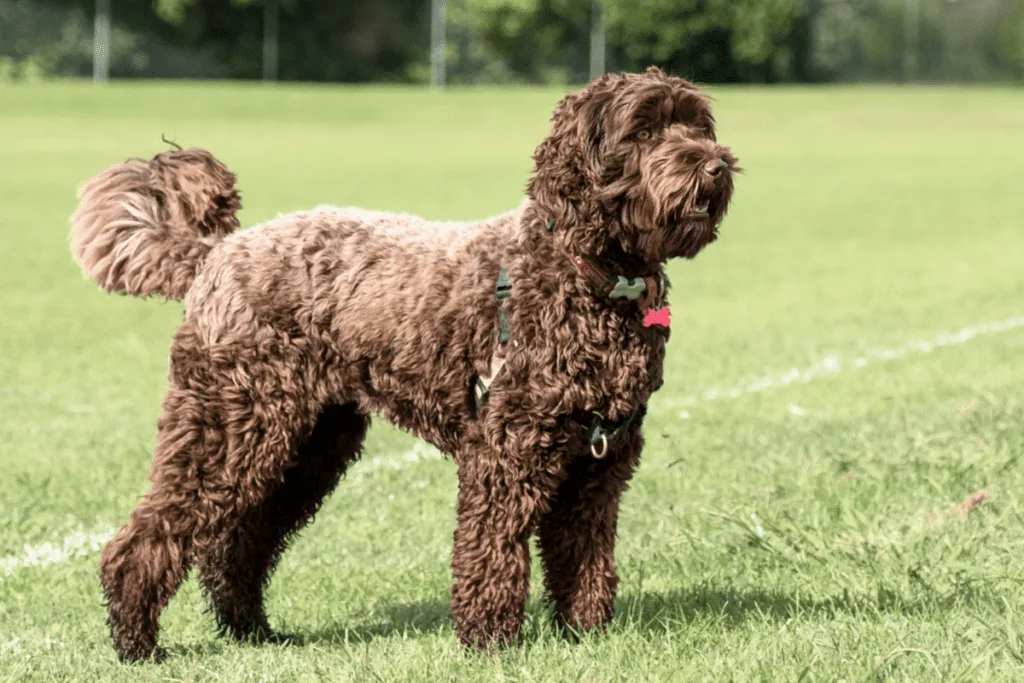
AKC Category: Sporting (Labrador) and utility (French Poodle)
Size Category: Large
Autism-linked Function: Autism specific service dog for autistic children with tactile hyposensitivity or mild dog allergies
Why Are Labradoodles Recommended for Autistic Children?
Initially, Labradoodles were created when a lady from Hawaii enquired about obtaining a hypoallergenic guide dog. The standard labradoodle is the result of crossing a standard French poodle with a Labrador.
F1 Labradoodles come in a range of coat types depending on which genes they inherited from their parents.
Wool coats are characterized by low-shedding, fine-haired, tightly curled coats; this coat type is best for allergy sufferers.
Fleece coats (long and wavy) and hair coats (straight hairs more like a shaggy Labrador) tend to shed more than wool coats and thus are less suitable for allergy sufferers.
While no dog is truly hypoallergenic anecdotal evidence indicates that people with mild dog allergies can tolerate low-shedding dog breeds better than heavy shedders.
A well-bred therapy Labradoodle is ideal for active autistic children who have mild dog allergies.
In addition to the benefits of a low-shedding coat, a hyposensitive autistic child may enjoy the texture of the tightly coiled woolly coat.
The springy curls provide a unique tactile sensation that can stimulate a hyposensitive child or focus an overwhelmed child.
In the video below a little girl with autism explains just how her Labradoodle has changed her life for the better:
Reasons Labradoodles May Not Be A Good Fit For Your Family
The biggest issue with Labradoodles lies in their inconsistency.
The American Kennel Association does not recognize the breed, and thus there is no breed description regulating the size, temperament, or coat of the dog.
The lack of regulation means that while some Labradoodles are the ultimate dog for an autistic child, others are a holy terror and public menace!
If you are convinced that the Labradoodle is the dog for you, I strongly recommend that you buy or adopt a trained dog; this removes the risk of getting an incompatible dog.
Two factors that may sway your decision away from Labradoodles are their energy levels and coat care.
These dogs are high-energy and need plenty of regular exercise to stay well-behaved.
While the coat may be low shedding, the Labradoodles grooming needs are extensive.
Having a disabled child often increases the demands on the caregiver’s time as they assist the child with daily tasks and facilitate various therapies.
Many caregivers avoid Labradoodles due to the extra time burden associated with grooming the dog multiple times each week.
A few Labradoodle owners manage the time demands by taking their Labradoodle for weekly grooming at a professional parlor and keeping the dog’s coat shaved short.
The weekly salon session is an expensive but viable option if you want a Labradoodle but can’t commit to daily grooming.
4. Saint Bernard
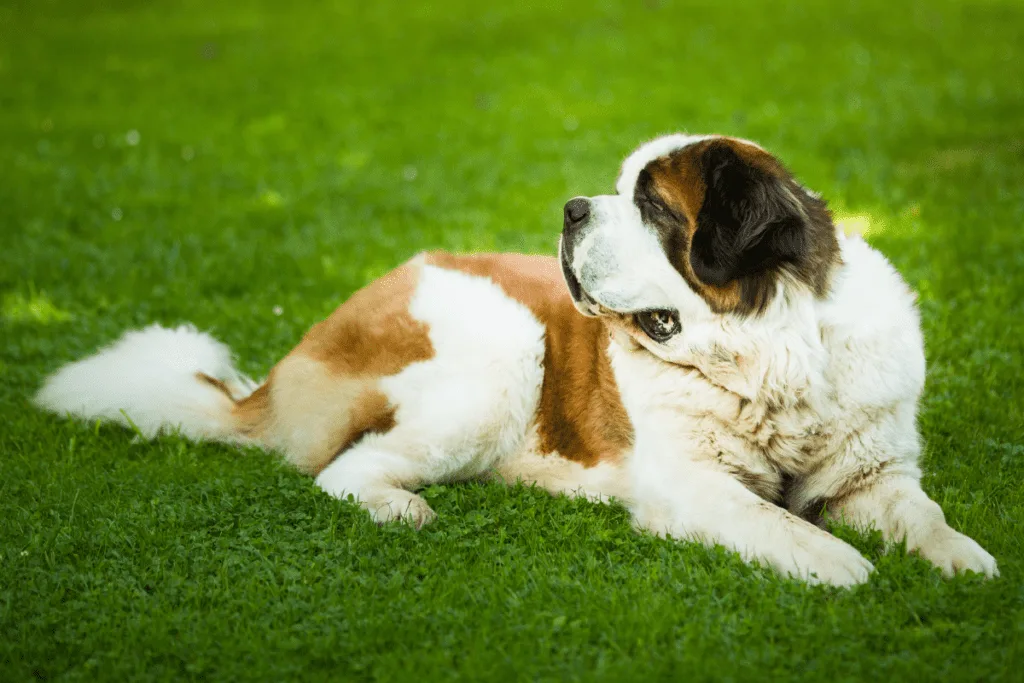
AKC Category: Working
Size Category: Giant
Autism-linked Function: Autism specific service dogs; Saint Bernards can tether or anchor a child prone to bolting
Why Are Saint Bernards Recommended for Autistic Children?
Approximately 50% of autistic children bolt when overstimulated; their active flight away from the perceived threat often leads them directly into the path of actual danger.
Parents of autistic children who show bolting behavior report a high incidence of fatal or near-fatal incidences.
These incidences often include the child running into oncoming traffic or falling into deep bodies of water and then being unable to calm down long enough to stay afloat.
Bolting is not uncommon amongst young children. However, neurotypical children are easily managed as the parent will hold the child’s hand or carry them, thereby preventing them from placing themselves in danger.
This solution is not a viable option for touch adverse autistic children.
Large, even-tempered dogs like Saint Bernards are taught to “anchor” the child, thereby removing the caregiver’s need to hold onto the child.
A 6ft line runs between a harness the dog wears and a harness or waist-belt that the child wears.
If the child makes a sudden run for it, the Saint Bernard will sit and brace, preventing the child from getting more than 6ft away from the safe place or person.
Anchoring can only be done with children under 12yrs and with giant breed dogs; larger children will overpower the dog or physically damage it as they pull against their harness.
Smaller dogs like Labradors and Golden Retrievers lack the physical size needed to anchor a frantic child successfully.
Many parents and caregivers have reported that anchoring dogs have significantly reduced the worry associated with activities outside of the home; they are able to relax their hypervigilance and enjoy spending time with their children when accompanied by their dog.
The video below shows just how much a Saint Bernard is opening up young Nathan’s world. He is this little boy’s lifeline in many ways, making an overwhelmingly positive impact on not only Nathan but his entire family too!
Reasons Saint Bernards May Not Be A Good Fit For Your Family
Saint Bernards have worked alongside humans for many centuries, but that does not mean that they are mindless drones; these dogs can be wilful and slow to train.
Saint Bernards are trainable, or else they wouldn’t have made the list, BUT they are not as easy to train as a Labrador or Golden Retriever. These dogs do best when trained systematically with positive reinforcement.
Some Saint Bernard’s, particularly dominant males, may be difficult to integrate into a multi-pet household or a household with other male dogs.
Many male Saint Bernards do best when they are the only male dog; however, neutering the dog can lessen the testosterone-driven behavior.
The last difficulty lies in the fact that Saint Bernards are slow-maturing, short-lived, and prone to musculoskeletal issues.
These factors mean that Saint Bernards have a relatively short working life and are more vulnerable to musculoskeletal damage due to the physical toll of being an “anchor.”
Saint Bernards typically have a working life of 5 to 7 yrs if used to tether or anchor an autistic child.
You should consider another dog if:
- You cannot obtain a trained Saint Bernard
- Cannot buy a Saint Bernard from a breeder who emphasizes temperament and health
You may also be put off but the buckets of drool Saint Bernards produce; these dogs often leave long, slimy trails of drool on the surfaces they investigate.
If excess drool overstimulates you or your child, Saint Bernards are not the right dogs for you.
5. Bichon Frise
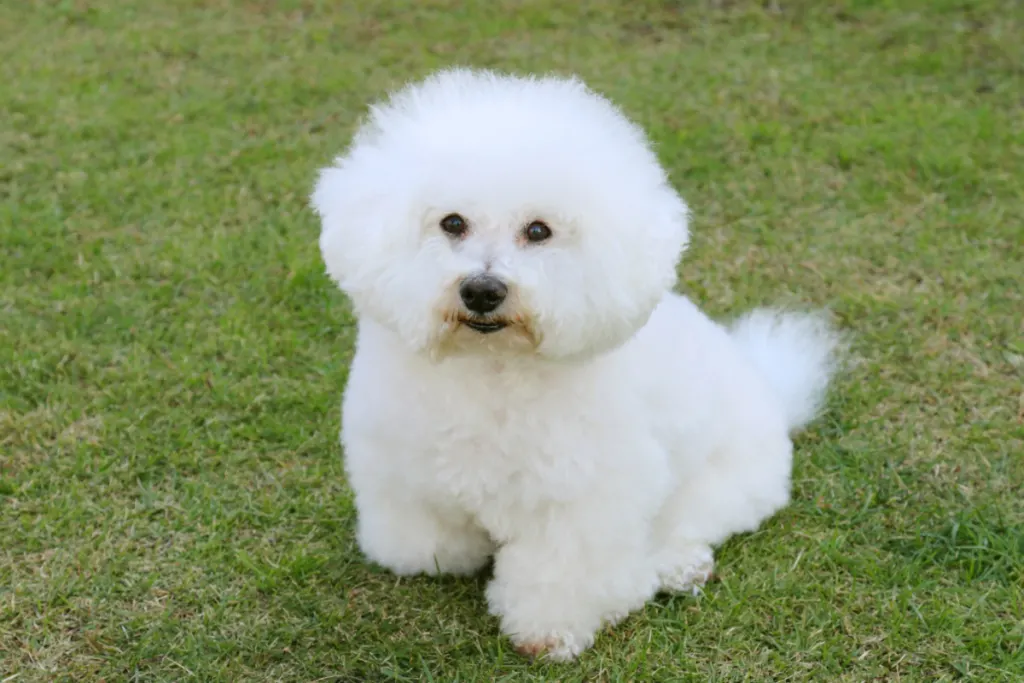
AKC Category: Non-sporting
Size Category: Small
Autism-linked Function: Therapeutic pet for development of social skills and emotional support
Why Are Bichon Frise Recommended for Autistic Children?
When asked to recommend a dog breed for a child on the autistic spectrum, most people only list large and giant breed dogs.
Extreme autism often results in physical outbursts and aggression that may harm or frighten smaller dogs.
However, it is essential to remember that:
- Autism exists as a spectrum of disorders, ranging from mild but still functional phenotypes to extreme dysfunction.
- Autism is a processing disorder, not the sum of “who” the child is; each child on the autistic spectrum is an individual, and their personality affects how the disorder manifests.
High-functioning children on the autistic spectrum who do not routinely show aggression often benefit from interactions with dogs, including small dogs like the Bichon Frise.
The small size and powder puff appearance of the Bichon Frise makes them less intimidating than larger dogs and may assist the child in overcoming their anxiety around dogs.
The unconditional acceptance offered by the Bichon Frise provides the perfect opportunity for autistic children to develop their social skills with a non-threatening partner.
The Bichon Frise is a low-shedding breed suitable for children or families with mild dog allergies.
The friendly, gregarious Bichon Frise is the perfect apartment-sized pet for families who want an autistic-compatible canine companion.
Reasons Bichon Frise May Not Be A Good Fit For Your Family
The Bichon Frise is too small to effectively function in the same capacity as a typical autism-service dog; they cannot tether or anchor a child; provide deep pressure, or restrict the child’s movement.
A Bichon Frise is unsuitable for highly dysfunctional or aggressive children on the autism spectrum.
In addition to their limitations as a pet for autistic children, prospective buyers need to consider this breed’s house training and grooming needs.
The Bichon Frise is a challenging dog to housetrain and requires a dedicated, consistent owner. It can take 10 to 12 months of persistent efforts to housetrain a Bichon Frise fully.
The Bichon Frise is ideal for people who struggle with mild dog allergies, BUT the coat needs to be groomed daily, and they should be taken to a professional salon every 6 to 8 weeks for a maintenance trim.
Comparison Between Recommended Breeds For Autistic Children
| Traits | Labrador Retriever | Golden Retriever | Labradoodle | Saint Bernard | Bichon Frise |
| Height | 21.5” to 24.5” | 21.5” to 24” | 21” to 24” | 26” to 30” | 9.5” to 11.5” |
| Weight | 55 to 80 lbs | 55 to 75 lbs | 50 to 80 lbs | 120 to 180 lbs | 12 to 18 lbs |
| Life Expectancy | 10 to 14 yrs | 10 to 14 yrs | 12 to 14 yrs | 8 to 12 yrs | 14 to 15 yrs |
| Tolerance for young children and children with autism | High – if they have been correctly bred and socialized | High – some golden retrievers are ultra-gentle and cannot handle aggressive outbursts from autistic children | High – the labradoodles’ parents must have good temperaments | High – they are often very protective of children they have “adopted” as their own. | High – this is one of the few small dogs that does not have a reputation for being snappy. |
| Sociability with family | High | High | High | High | High |
| Sociability with strangers | High | High | High | Moderate – they are not unfriendly but won’t go out of their way to make friends with strangers. | High |
| Sociability with other dogs and pets | High | High | High | Moderate – males may show aggression to other male dogs | High |
| Adaptability, i.e., the opposite of neuroticism | High – However, individual dogs may be more neurotic than expected and less suitable for autistic children. | High – However, individual dogs may be more neurotic than expected | Moderate – some Labradoodles are prone to anxiety | Moderately high – susceptible to heatstroke | Moderate – they need to be socialized from a young age as Bichon Frise can be anxious. |
| Trainability | High | High | Moderate to high – some Labradoodles are prone to distractibility | Moderate – they can occasionally be willful and stubborn | Moderately high – housetraining can be an issue |
| Playfulness | High – Labradors older than 2yrs are calmer than younger Labradors | Moderately High – Golden Retrievers older than 2yrs are calmer than younger dogs | High – many Labradoodles are exuberantly bouncy and may intimidate anxious children | Moderate | Moderate |
| Energy level | Moderate to High – choose lower energy Labradors for hypersensitive children | Moderate – choose lower energy Golden Retrievers for hypersensitive children. | Exceptionally high – choose a purpose-bred therapy labradoodle | Low to moderate – they are not energizer bunnies | Moderate |
| Barking | Moderate | Low – better suited to noise-sensitive autistic children | Moderate to high – the poodle is notoriously noisy | Low – suitable for noise-sensitive autistic children | Moderate to high – they are good watchdogs because they are always alert |
| Drooling | Low | Moderately low -Most Golden Retriever don’t drool excessively | Low | High – don’t get these dogs if you can’t deal with dog drool | Low |
| Coat type | Thick, water repellent double coat | Medium-length, silky double coat – it can be prone to tangles and mats if they run through thick underbrush | 3 types: wool, fleece, and hair | 2 types – smooth-coated and rough-coated | Long, double coat with curls |
| Shedding | Moderately high | Moderately high | 3 levels: low (wool coat), moderate (fleece coat), moderately high (hair coat) | Moderate | Low |
| Grooming Needs | Low | Moderate | 2 levels: High maintenance (wool and fleece coats) and moderate (hair coat) | Moderately low | Extremely High |
Additional articles that you may find interesting:
Are German Shepherds Good Service Dogs?
Are German Shepherds Good Emotional Support Dogs? All You Need to Know
Final Thoughts
Professional organizations routinely use the breeds listed here as service dogs due to their outstanding trainability, temperament stability, and friendly approach to life; these dogs have proven time and again their value as service dogs to autistic children.
However, it is important to remember that companion and service dogs are not a “one size fits all”
